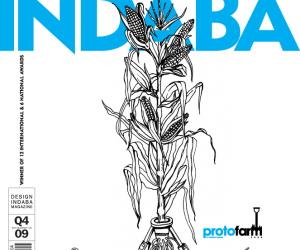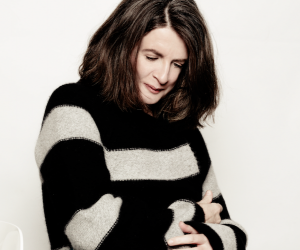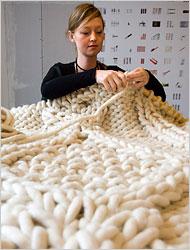First Published in
By choosing sustainable materials that support, rather than deplete, endangered environments, designers can help reshape the materials economy and advance a global conservation ethic. Commissioned by the Nature Conservancy, the Design for a Living World project and exhibition saw 10 leading designers focus on a natural material from a specific place where the Conservancy works.
With locations ranging from iconic American landscapes, such as the sweeping grasslands of Idaho, to such exotic places as the southwest coast of Australia and the forests of China’s Yunnan Province, the resulting designs are as varied.
Yves Béhar, for instance, worked with a women’s chocolate coop in Costa Rica to develop packaging for the raw cocoa they use to make a traditional hot drink and a grating tool that evokes the sensual nature of chocolate. Going beyond chicle latex’s use in chewing gum production, Dutch designer Hella Jongerius developed a series of 20 embellished vessels and plates with a community in the Yucatan Peninsula.
On the other hand, Stephen Burks travelled to Australia’s Gondwana Link to design the Totem – a tool made from reclaimed native jamwood that the local Noongar people use to make and package a line of organic herb- and sandalwood-based cosmetics. Using FSC-certified plywood from Bolivia, Abbot Miller designed a chair whose components can be shipped flat and dry-assembled with a rubber mallet. The chair design highlights the beauty of Bolivian wood, while also yielding three chairs per sheet of plywood, with a minimal amount of waste.
Other participating designers are Maya Lin, Christien Meindertsma, Isaac Mizrahi, Ted Muehling, Kate Spade and Ezri Tarazi.
The exhibition shows at the Cooper-Hewitt National Design Museum in New York until 4 January 2010.
By choosing sustainable materials that support, rather than deplete, endangered environments, designers can help reshape the materials economy and advance a global conservation ethic. Commissioned by the Nature Conservancy, the Design for a Living World project and exhibition sees 10 leading designers focus on a natural material from a specific place where the Conservancy works.
With locations ranging from iconic American landscapes, such as the sweeping grasslands of Idaho, to such exotic places as the southwest coast of Australia and the forests of China’s Yunnan Province, the resulting designs are as varied.
Yves Béhar, for instance, worked with a women’s chocolate coop in Costa Rica to develop packaging for the raw cocoa they use to make a traditional hot drink and a grating tool that evokes the sensual nature of chocolate. Going beyond chicle latex’s use in chewing gum production, Dutch designer Hella Jongerius developed a series of 20 embellished vessels and plates with a community in the Yucatan Peninsula.
On the other hand, Stephen Burks travelled to Australia’s Gondwana Link to design the Totem – a tool made from reclaimed native jamwood that the local Noongar people use to make and package a line of organic herb- and sandalwood-based cosmetics. Using FSC-certified plywood from Bolivia, Abbot Miller designed a chair whose components can be shipped flat and dry-assembled with a rubber mallet. The chair design highlights the beauty of Bolivian wood, while also yielding three chairs per sheet of plywood, with a minimal amount of waste.
Other participating designers are Maya Lin, Christien Meindertsma, Isaac Mizrahi, Ted Muehling, Kate Spade and Ezri Tarazi.
The exhibition shows at the Cooper-Hewitt National Design Museum in New York until 4 January 2010.




















